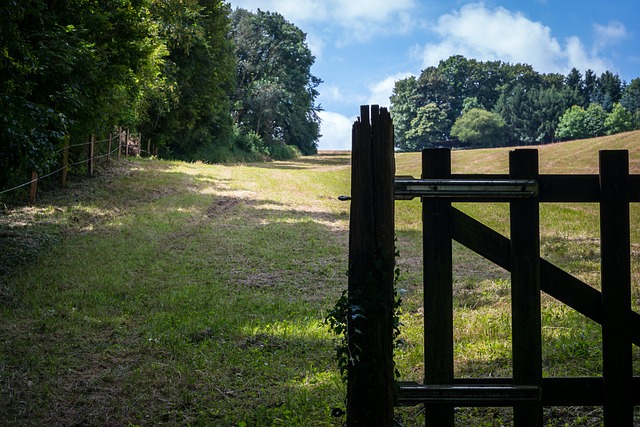Looking to enhance your New Bedford, Massachusetts property with a DIY fence installation? This comprehensive guide offers invaluable tips for every step of the process. From preparing your yard for construction to selecting durable materials, planning the perfect layout, and ensuring robust corner posts and footings, we break down each crucial aspect. Discover expert advice on attaching panels and rails, completing the look with final touches, and maintaining your new fence for years to come.
- Prepare Your Yard for Fence Installation
- Choose the Right Fence Material
- Plan Your Fence Layout and Design
- Install Corner Posts and Footings
- Attach Panels and Rails to Frame
- Final Touches and Maintenance Tips
Prepare Your Yard for Fence Installation
Before starting your DIY fence installation project, preparing your yard is a crucial step. Begin by clearing any debris, such as branches or old vegetation, that might obstruct the installation process. Mark out the perimeter of your desired fence line using string and stakes to ensure a straight and consistent path for your new fence. This will help guide you during excavation and post-installation.
Next, assess the existing grade of your yard. Ensure it is level where the fence will be erected, as an uneven surface can affect the fence’s stability. Consider adjusting the terrain if necessary, filling in dips or grading up slopes to create a stable base for your new fence. This preparation will not only make installation easier but also contribute to the longevity and structural integrity of your fence.
Choose the Right Fence Material
When it comes to DIY fence installation, selecting the right material is half the battle won. For New Bedford homeowners, considering climate and local conditions is key. In this region, durable materials like treated wood or vinyl are excellent choices. Treated wood offers longevity against rot and insects, while vinyl fences require less maintenance and are resistant to extreme weather.
Each material has unique benefits, so research options based on your needs and budget. Local hardware stores in New Bedford can provide guidance, ensuring you choose a fence material that will enhance your outdoor space for years to come.
Plan Your Fence Layout and Design
Before breaking ground, take the time to plan your fence layout and design. Consider factors like where you want the fence to be located, its purpose (privacy, security, or aesthetic appeal), and what style will complement your property’s existing landscape. Create a rough sketch or use online tools to visualize your desired fence type, size, and placement. This step is crucial for ensuring your fence not only looks great but also serves its intended purpose effectively.
Additionally, check local building codes and zoning regulations regarding fence installation in New Bedford, Massachusetts. Obtain any necessary permits before gathering materials and starting the installation process. Planning carefully upfront will make the DIY fence installation project smoother and more successful.
Install Corner Posts and Footings
When setting up corner posts and footings for your DIY fence, ensure a solid foundation by choosing locations that are level and well-drained. Dig holes for the footings that are deep enough to support the fence’s weight and width. Place concrete in the holes, allowing it to set completely before installing the corner posts. These posts provide structural integrity and should be securely fastened with concrete or metal brackets, depending on your chosen fence material.
Use a level to ensure the posts are plumb (perfectly vertical) and then secure them firmly. The process may vary slightly based on the type of fence you’re building, but the corner posts serve as anchors that keep your fence upright and stable, crucial for withstanding wind and other environmental factors in New Bedford’s climate.
Attach Panels and Rails to Frame
After securely attaching the posts to the ground, it’s time to install the fence panels and rails. Begin by placing the panels between the posts, ensuring they fit snugly. Use a level to check for any gaps or inclines, adjusting as needed. Next, attach the horizontal rails to the posts using brackets or nails, securing them at both the top and bottom of each panel. Make sure these connections are sturdy and even, as this will ensure your fence’s longevity and stability.
Final Touches and Maintenance Tips
Once your fence is fully installed, it’s time to focus on those final touches. This includes ensuring all posts are securely in place, gates operate smoothly, and any hardware is properly fastened. Take a step back to assess the overall appearance of your new fence, making adjustments as needed to achieve a level and uniform finish. Regular maintenance will keep your fence looking its best for years to come. A simple cleaning routine with mild soap and water can prevent buildup and prolong the life of your fence. Inspect it regularly for any signs of damage or wear, and address issues promptly to avoid larger problems down the line.
